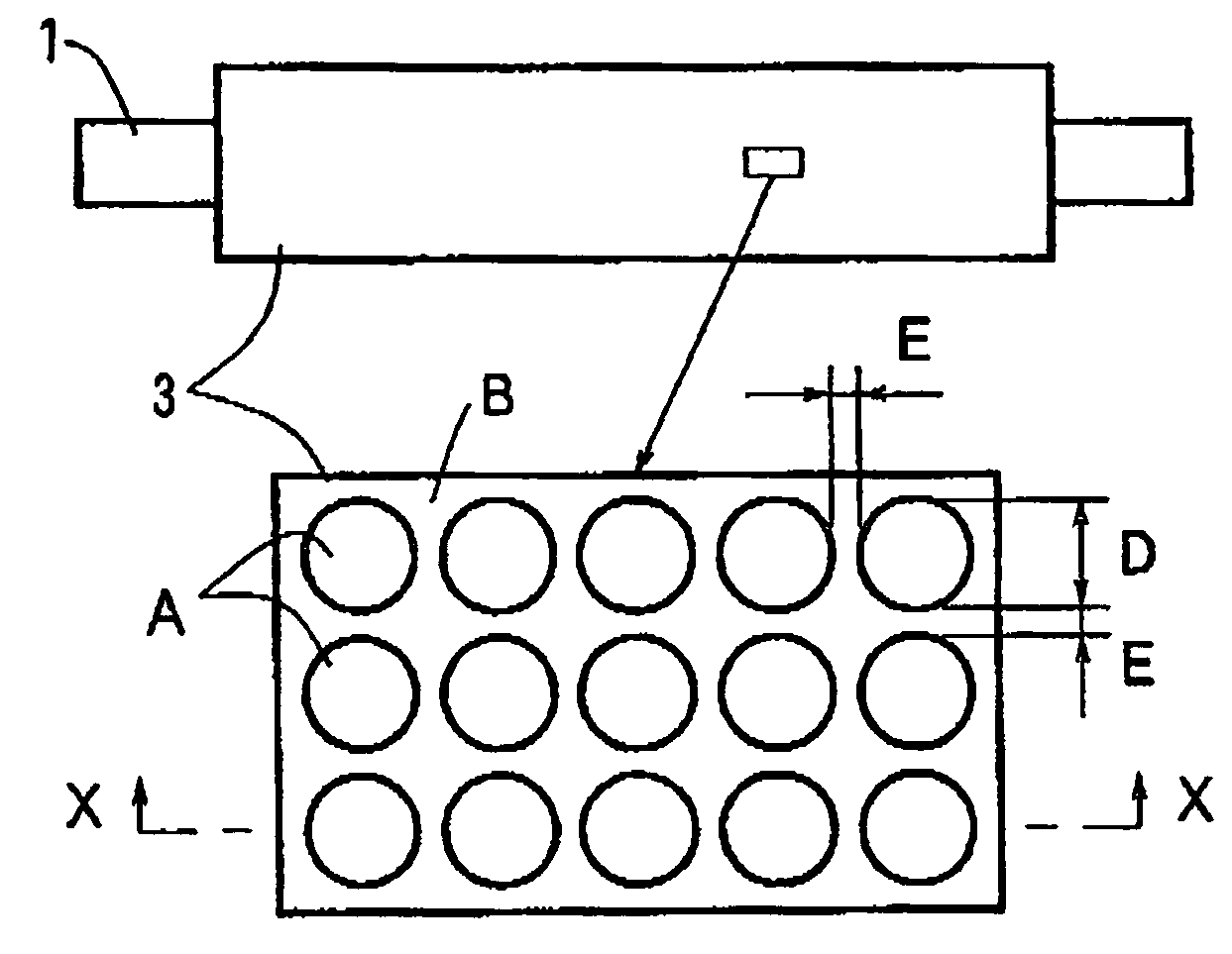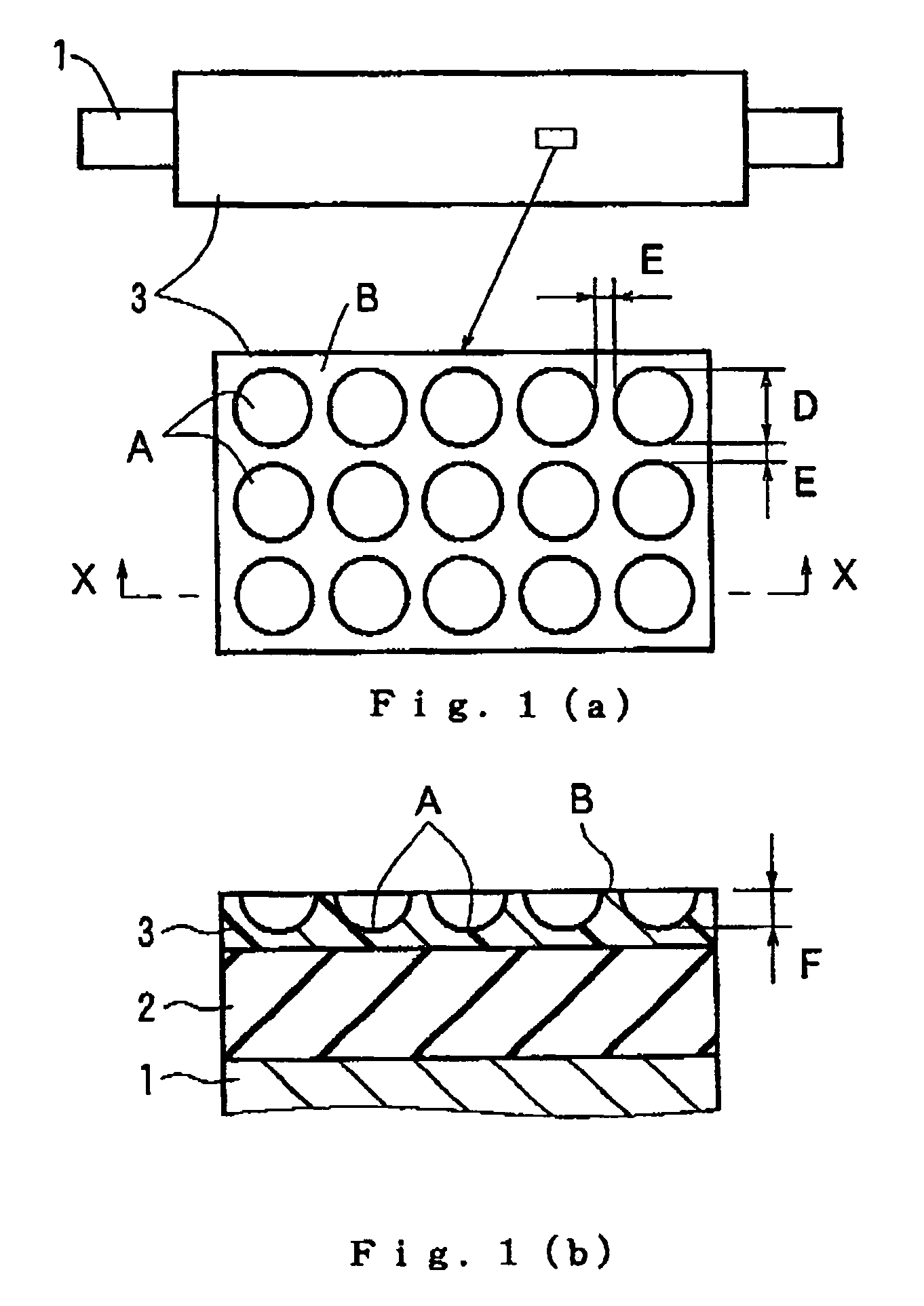Developing roll
a technology of developing roll and surface roughness, which is applied in the field of developing roll, can solve the problems of affecting image quality and difficult to maintain a uniform surface roughness for a long time, and achieve the effect of uniformizing the surface roughness of the developing roll and improving the uniformity of toner transportability
- Summary
- Abstract
- Description
- Claims
- Application Information
AI Technical Summary
Benefits of technology
Problems solved by technology
Method used
Image
Examples
example 1
[0054]A developing roll was produced by using a shaft, materials for forming each layer, a transfer mold obtained by electroforming and forming an elastic layer on an outer peripheral surface of the shaft and then forming an outermost layer thereon.
Shaft
[0055]A solid core cylindrical shaft, made of iron, having a diameter of 8 mm and a length of 350 mm was prepared.
Material for Forming Elastic Layer
[0056]The material for forming an elastic layer 2 was prepared by kneading an electrically conductive silicone rubber (X34-270A / B available from Shin-Etsu Chemical Co. Ltd. of Tokyo, Japan) by means of a kneader.
Material for Forming Outermost Layer
[0057]The material for forming an outermost layer was prepared by using 40 parts by weight of carbon black (DENKA BLACK HS-100 available from DENKI KAGAKU KOGYO KABUSHIKI KAISHA of Tokyo, Japan) based on 100 parts by weight of polycarbonate diol urethane resin (Nippolan 5196 available from Nippon Polyurethane Industry Co., Ltd. of Tokyo, Japan),...
example 2
[0061]A developing roll was prepared in substantially the same manner as in Example 1, except that conditions were changed; an output of 28 A, a frequency of 5 kHz and an irradiation speed of 625 mm / sec for forming dimples each having an open end diameter of 120 μm on the outer peripheral surface of the outermost layer.
example 3
[0062]A developing roll was prepared in substantially the same manner as in Example 1, except that conditions were changed; an output of 24.5 A, a frequency of 5 kHz and an irradiation speed of 425 mm / sec for forming dimples each having an open end diameter of 80 μm on the outer peripheral surface of the outermost layer.
PUM
 Login to View More
Login to View More Abstract
Description
Claims
Application Information
 Login to View More
Login to View More - R&D
- Intellectual Property
- Life Sciences
- Materials
- Tech Scout
- Unparalleled Data Quality
- Higher Quality Content
- 60% Fewer Hallucinations
Browse by: Latest US Patents, China's latest patents, Technical Efficacy Thesaurus, Application Domain, Technology Topic, Popular Technical Reports.
© 2025 PatSnap. All rights reserved.Legal|Privacy policy|Modern Slavery Act Transparency Statement|Sitemap|About US| Contact US: help@patsnap.com



